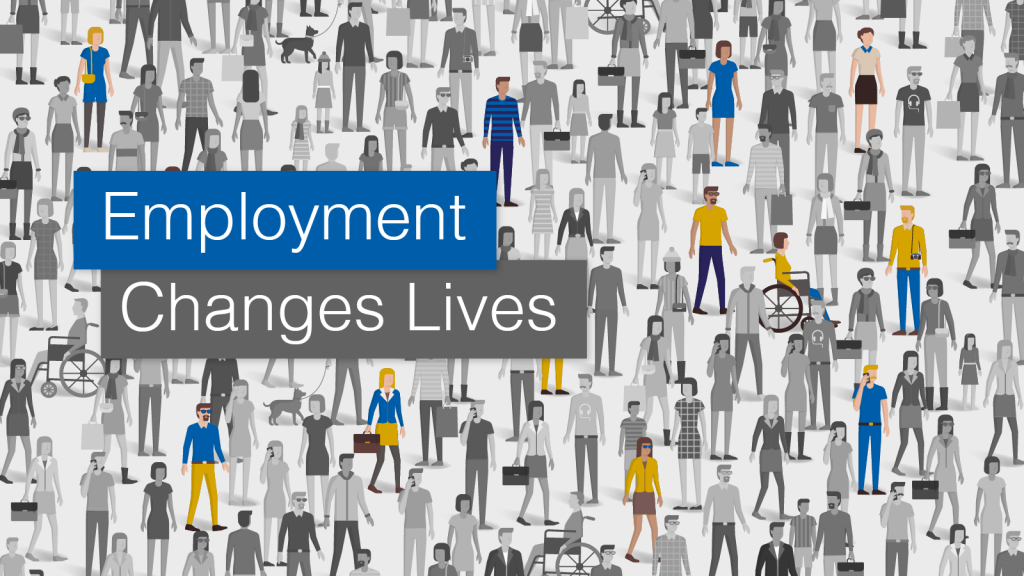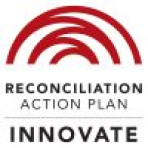A job is a lot more than just a pay cheque. Money is important, but employment is about so much more. A job also offers a sense of belonging that boosts self-esteem. Even more, a job offers people meaning and the ability to make a difference in the world. With so many benefits of having a job, it’s harder to hear the struggle facing people with disabilities. In Australia, 93% of unemployed working-age people with a disability struggle to find employment.[i]
So, who exactly is classed as a person living with a disability? According to the Australian Bureau of Statistics, disability is defined as ‘any limitation, restriction or impairment which restricts everyday activities and has lasted or is likely to last for at least six months. With such a broad definition, a lot of Australians are affected. In fact, one in six Australians are living with disability and many are working effectively with minimal or no additional assistance. Despite this great outcome, gaining meaningful employment remains difficult.
Employment Changes Lives Massively
For people living with disabilities, employment has some special advantages that are too great to skip over. As it turns out, employment is the key to higher quality of life across social, financial and personal skills arenas. When people living with a disability achieve financial empowerment, they’re also able to fund specialised healthcare that helps them live better. Employment has also been shown to improve an individual’s capacity for decision-making and self-management, increasing autonomy.[ii]
Employment offers a platform for personal achievement and even recognition, which accelerates internal motivation. It offers a host of social benefits like creating personal networks, building relationships and inclusion in community. Meaningful work often leads to more access to more opportunities, resources and services, especially for those living with a disability. Employment also increases development and brings chances to gain new skills, advancing future employment opportunities.
Diverse Talent Benefits Employers
Australia is facing a serious skills shortage. Finding new talent pools is a smart solution to address the issue and bringing more people with disabilities into the workplace is a win-win. People with disabilities have been shown to demonstrate positive work attitudes and excellent work ethics, which are valuable assets for businesses[iii]. Hiring employees with disabilities can boost productivity, morale, and culture, while lowering absenteeism, turnover and workers’ compensation claims.[iv] Additionally, employees with disabilities tend to have fewer sick leave days compared to their counterparts.[v] As a whole, for employers, this translates into more dedication and loyalty.
If you’re in the market for creativity, this is the right place to look. Candidates with disabilities have likely developed creative ways to approach tasks. This problem-solving mindset can bring innovation and fresh thinking. As staff from different backgrounds learn to work together, it encourages a more empathetic and collaborative culture. As an enthusiastic employer of those living with disability, BUSY knows first-hand how having employees with disabilities on the team can help companies better serve the one in six Australians living with disabilities. For some businesses this could be an untapped market. [vi]
Tackling Low Participation Rates
With so many Aussies living with a disability, why is employment so tough? 66% of disability pensioners have mild or moderate disability, yet many are able to work effectively with minimal or no additional assistance. The statistics look strong, but people living with disability of working age are twice as likely to be unemployed (10%) compared to those without (4.6%). They are also more likely to be underemployed by 10%. Unfortunately, many people with disabilities lack the experience, opportunity or encouragement needed to get them into sustainable employment[vii].
People with disabilities seeking employment can face discrimination, misconceptions about their work capacities, negative employer attitudes and a lack of disability-friendly workplaces. Additionally, people with physical disabilities who were involuntarily unemployed have been found to experience higher levels of depression compared to non-disabled individuals[viii].
Young people living with a disability are showing a steady decrease in participation. They’re more than twice as likely to be unemployed or dissatisfied with their employment opportunities and job prospects. The transition period into the workforce is fraught with uncertainties for those living with a disability and they are more likely to face social exclusion. Between the ages of 15 and 25, young people with disability become increasingly disadvantaged compared to young people without disability[ix].
Better Pathways to Employment
Improving the employment outcomes of people living with disability ties into social justice and inclusivity. Some of the best pathways for young people with disabilities are apprenticeships and traineeships, which are positive vocational pathways for people living with disabilities[x]. Work-based learning programs like these combine formal education with practical experience, stronger skills and increase the chances of securing long-term, meaningful employment. Bridging the gap between education and the workforce while promoting independence is a brilliant solution.
When it comes to completion rates for these programs, they’re only slightly lower than those for individuals not living with a disability[xi]. But for those who do complete their program, they report higher employment, wages and job durability compared to people who started their first jobs without doing any formal training[xii]. A place-then-train strategy can also help develop non-vocational skills. The ability to participate in direct, hands-on work placement experience while in high school also builds a range of work-related soft skills that are essential for success, like better workplace communication. These skills are a key factor in obtaining employment and success in the workplace[xiii].
How BUSY Helps
It’s time we talked about breaking down barriers and giving everyone a chance to reap the benefits of meaningful work. Apprenticeships and traineeships fall within the broader Australian vocational education and training (VET) system and are collectively referred to as Australian Apprenticeships.[xiv] As an Australian Apprenticeship Support Services provider, BUSY At Work supports people with disabilities into traineeships and apprenticeships for a range of industries. We are also a registered provider of Disability Employment Services (DES) through BUSY Ability. We’re excited to help people take the next step that will change their lives. We’re always looking for strategic partners and companies who are ready to team up and make a difference together. If you’re ready to see what we can do together, reach out to us.
[i] Australian Institute of Health and Welfare (2022). ‘People With Disability in Australia 2022’, AIHWA Report.
[ii] Cocks, E, Thorensen, S & Lee E (2015). ‘Pathways to Employment and Qualilty of Life for Apprenticeship and Traineeship Graduates with Disabilities,’ International Journal of Disability, Development and Education 62(4).
[iii] Department of Education, Employment and Workplace Relations (2011). ‘Employer perspectives on recruiting people with disability and the role of Disability Employment Services’.
[iv] Australian Chamber of Commerce and Industry. (2014). ‘Employ Outside the Box: The Business Case for Employing People with Disability’.
[v] Australian Safety and Compensation Council (2007). ‘Are People with Disability at Risk at Work?’
[vi] Australian Chamber of Commerce and Industry. (2014). Employ Outside the Box: The Business Case for Employing People with Disability.
[vii] Australian Institute of Health and Welfare (2022). ‘People With Disability in Australia 2022’, AIHWA Report.
[viii] Cocks, E, Thorensen, S & Lee E (2015). ‘Pathways to Employment and Qualilty of Life for Apprenticeship and Traineeship Graduates with Disabilities,’ International Journal of Disability, Development and Education 62(4).
[x] Cocks, E, Thorensen, S & Lee E (2015). ‘Pathways to Employment and Qualilty of Life for Apprenticeship and Traineeship Graduates with Disabilities,’ International Journal of Disability, Development and Education 62(4).
[xii] [xiii] [xiv] Cocks, E, Thorensen, S & Lee E (2015). ‘Pathways to Employment and Qualilty of Life for Apprenticeship and Traineeship Graduates with Disabilities,’ International Journal of Disability, Development and Education 62(4).

